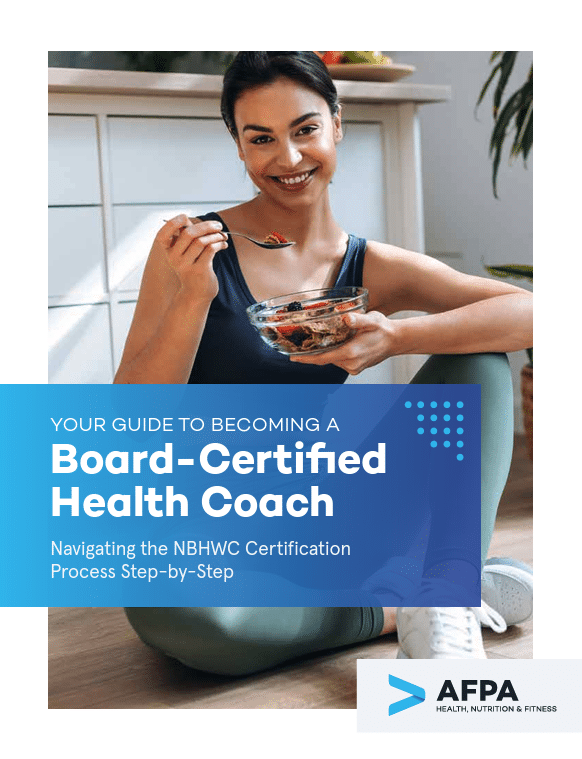As daylight hours get shorter and the holiday season ramps up, schedules and routines inevitably shift. For many of your clients, these changes can pose challenges to their fitness and nutrition habits and goals. Whether it’s due to endless holiday parties or harsh winter weather, it’s common for people to downshift their healthy eating and regular activity routines.
Some indulgence and relaxation during the winter months are expected, but too much can make it difficult for clients to get back on track—and in some cases, may even lead to long-term setbacks. To help your clients embrace the season without losing sight of their health and wellness goals, here are 11 actionable strategies:
1. Plan for Success
Rather than letting winter disruptions derail progress, encourage clients to what might pull them off track and brainstorm strategies to keep them aligned with their goals. For example, if they typically enjoy outdoor activities like running or cycling, they can explore planned alternatives such as indoor cycling or treadmill workouts during the cold winter months. A flexible approach helps clients maintain their fitness without feeling frustrated by seasonal changes.
2. Revisit Their “Why”
Motivation can wane during the colder months, making it important to remind clients of their core reasons for staying active and eating well. Ask them to write down their personal goals and they’re “why” for their wellness journey, whether it’s boosting energy levels, preventing seasonal weight gain, strengthening immunity, or maintaining a positive mood. Keeping these motivations visible—on a sticky note, phone wallpaper, or fitness journal—can reinforce their commitment.
3. Try New Things
As clients get stressed from holiday activities, this is a great time to advise them to try something new, because it can keep them feeling energized and motivated. For fitness that might mean suggesting new classes from yoga to bootcamp. For nutrition, it could involve trying out new spices, ingredients, or meal-planning strategies.
The winter season is a great time to introduce variety into fitness routines and nutrition habits. Suggesting new workout classes—such as indoor cycling, Pilates, or dance-based cardio—can keep clients engaged and excited. For nutrition, challenge them to explore seasonal ingredients like squash, pomegranates, and root vegetables, or new spices, to create nutritious and satisfying meals.
4. Shift to “Movement Snacks”
For clients struggling to fit in structured workouts, suggest incorporating short bursts of movement throughout the day. These “movement snacks” could include:
- Taking a brisk walk during lunch breaks. These small efforts add up and help combat the effects of a more sedentary lifestyle.
- Doing 10 squats every time they stand up from their desk.
- Taking the stairs instead of the elevator.
- Doing a few push-ups or planks during TV commercials.

Learn How to Set Yourself Apart as a Board-Certified Health Coach
5. Plan for Snow Days
If you live in an area that gets snow, you’ll need to be especially creative with developing at-home workouts in case clients get snowed in. Having a full range of “movement snacks” is useful, but you may also consider some online resources, such as fitness sites that stream workout videos. Also, help clients plan for snow-day nutrition by creating a list of healthy ingredients they can have on hand and go-to recipes that are easy to make.
Clients in snowy climates may face unexpected gym closures or difficulty commuting. Encourage them to prepare for these situations by having a go-to set of bodyweight exercises they can do at home. You can also recommend online workout platforms or apps that offer guided workouts, ensuring they stay active even when stuck indoors.
6. Gear Up for Outdoor Activity
Cold weather doesn’t have to mean staying inside. Encourage clients to invest in proper winter workout gear, including moisture-wicking base layers, thermal leggings, and insulated gloves. Winter activities like cross-country skiing, snowshoeing, or even a simple hike in the snow can be fantastic ways to stay active while enjoying the season.
7. Know Their Nutrition Obstacles
As the holidays get into full swing, it’s likely that your nutrition clients know what’s coming. Aunt Jenny’s famous rum cake, their mom’s super cheesy pasta dishes, the office party’s open bar—there will be tons of temptations. Help clients develop strategies to navigate these situations, such as:
- Eating a healthy snack before attending parties to curb overindulgence.
- Practicing portion control by using smaller plates.
- Prioritizing protein and fiber-rich foods to stay fuller longer.
- Drinking plenty of water to prevent dehydration and mistaking thirst for hunger. By planning ahead, they can enjoy holiday gatherings without feeling like they’ve sabotaged their nutrition goals.
8. Have a Go-To Holiday Dish
One of the best ways to ensure access to nutritious options at holiday events is to bring a healthy dish. Encourage clients to prepare something they love, such as a hearty quinoa salad, roasted Brussels sprouts with balsamic glaze, or a festive fruit platter. This way, they can enjoy familiar flavors while maintaining their commitment to healthy eating.
9. Integrate Healthy Carbs
Winter often sparks the desire to hunker down and carb load. That’s because the lower amount of sunlight can affect your amount of serotonin, the hormone associated with feeling happy. Carbs can increase serotonin, but the unhealthy type usually send you crashing back down—and then reaching for more simple carbs, trapping you in a cycle. Help your clients opt, instead, for nutrient-dense, healthy carbs, such as:
- Sweet potatoes
- Squash
- Oatmeal
- Whole grains like quinoa or farro
These complex carbs provide sustained energy and support mood regulation without the rollercoaster effects of simple sugars.
10. Boost the Immune System
As your clients work to maintain their fitness and nutrition levels, be sure they give their immune systems some extra attention with other strategies that can keep them healthy such as:
- Getting adequate sleep (7–9 hours per night).
- Managing stress through mindfulness or meditation.
- Incorporating probiotic-rich foods like yogurt, kimchi, and sauerkraut.
- Staying hydrated and drinking herbal teas with immune-supporting ingredients like ginger and turmeric. Keeping their immune system strong will enable them to stay consistent with their fitness and nutrition routine
All of these strategies can provide immune-system advantages, which is a big plus as cold and flu season swirls around.
11. Prep for Active Travel
Winter travel plans can disrupt healthy habits, so encourage clients to plan ahead. Suggest researching:
- Healthy restaurant options with nutritious menu choices. By having a plan in place, they’ll be more likely to stay active and eat well while on the go.
- Nearby gyms or fitness studios in their travel destination.
- Hotels with workout facilities.
- Local running or hiking trails.
Keep Clients Engaged and Motivated
In general, winter doesn’t have to mean hibernation for your clients, especially if that puts them on an unhealthy track. Helping them create solid plans and new goals can strengthen your professional relationship, and they’ll appreciate your efforts to make winter work for them.
Ready to help others improve their health and wellness? Download your free Holistic Health Coach Career Guide in order to turn your passion into a thriving career.

Get Your Free Guide
Learn How to Start a Fulfilling, Impactful Career as a Holistic Health Coach
You’ll learn:
- Why holistic health matters
- If holistic health coaching is right for you
- What career opportunities exist for health coaches
- And more!



